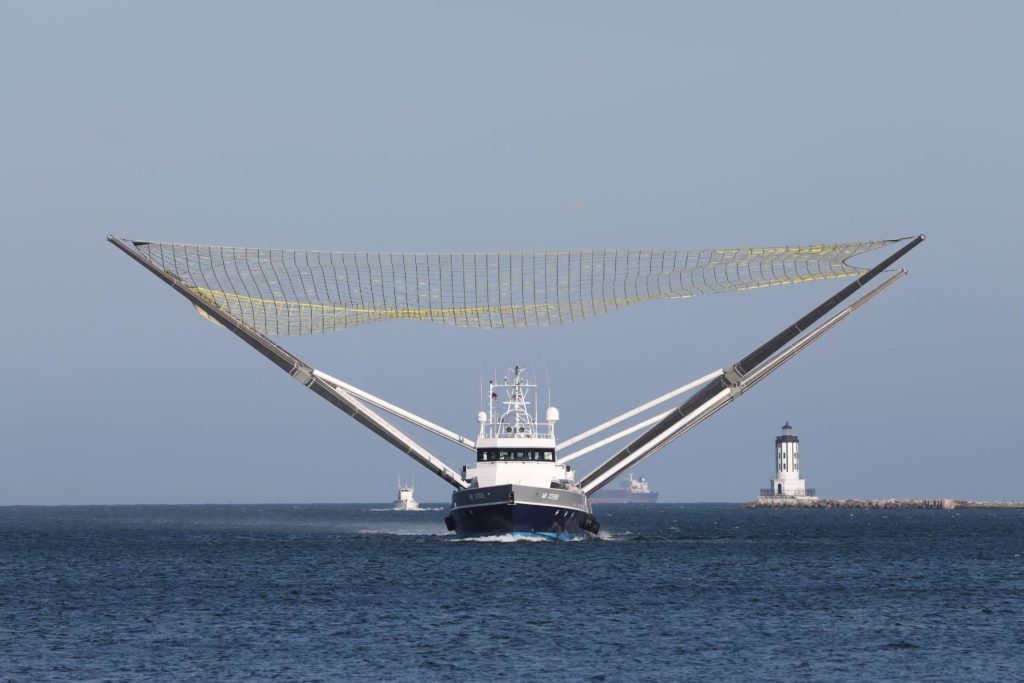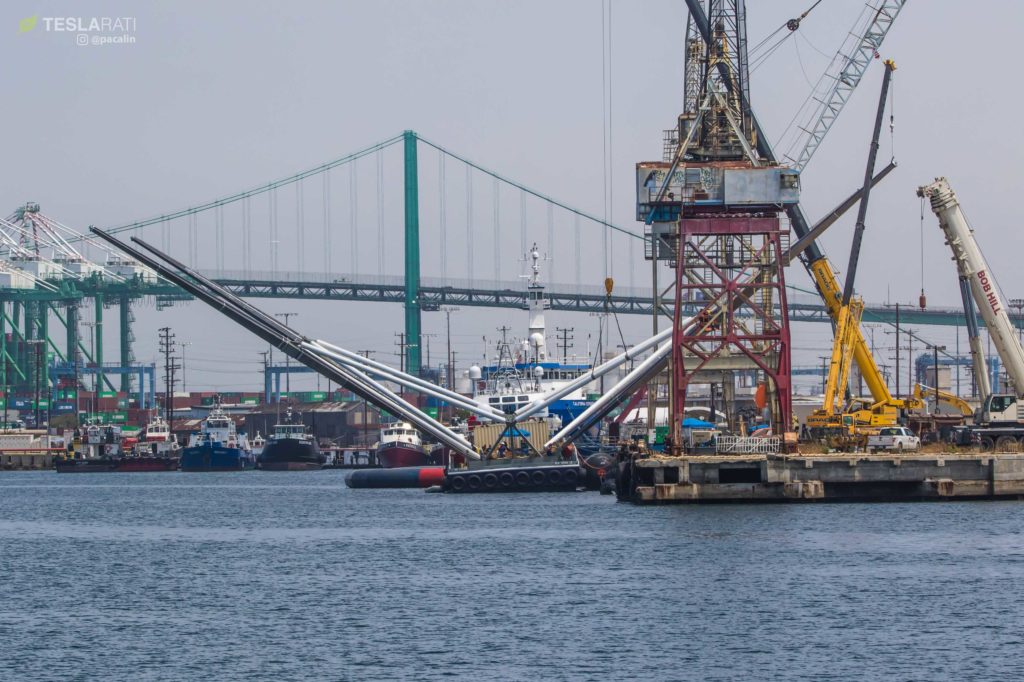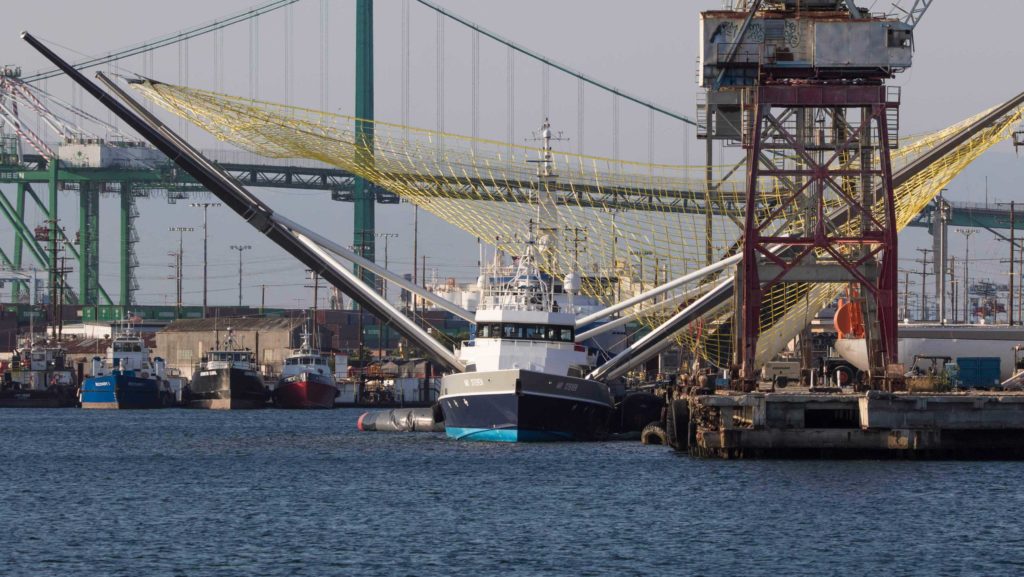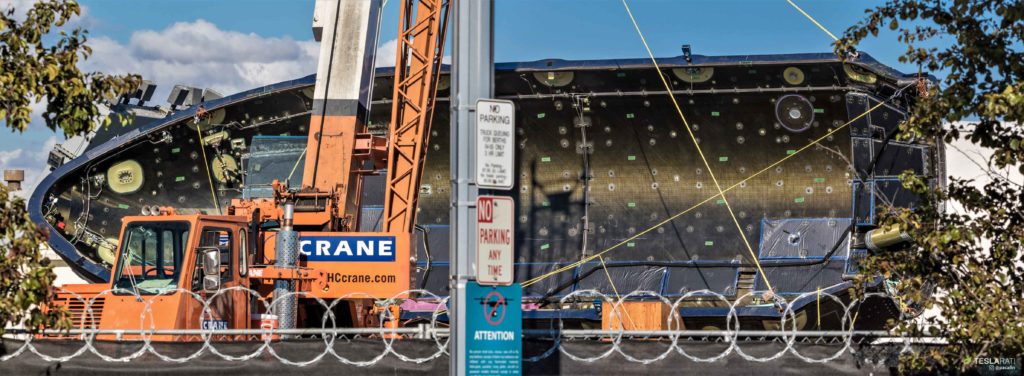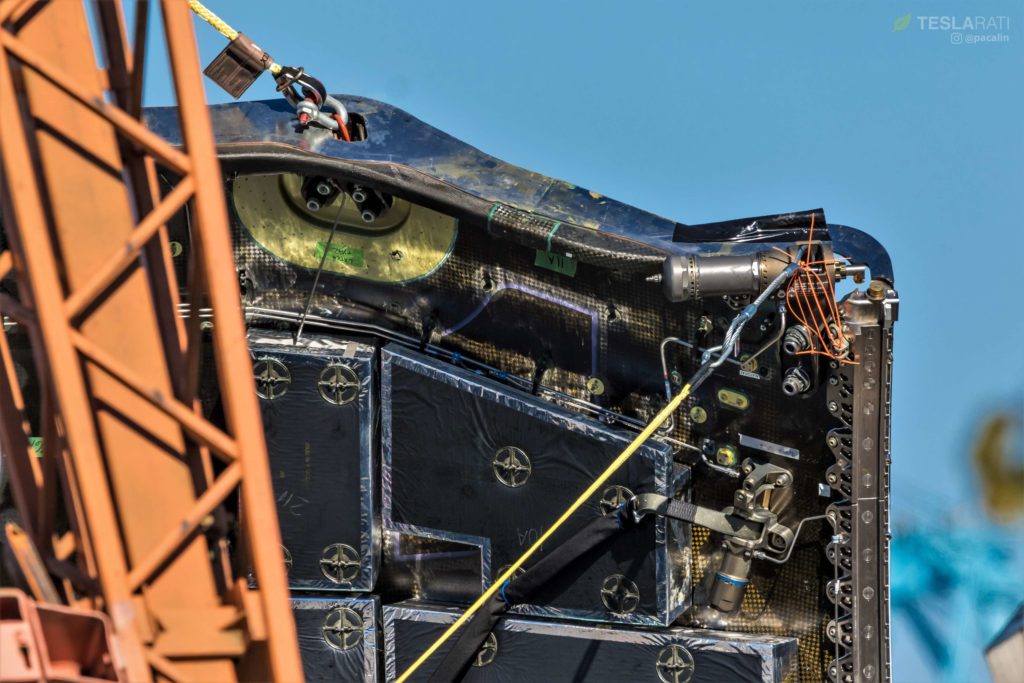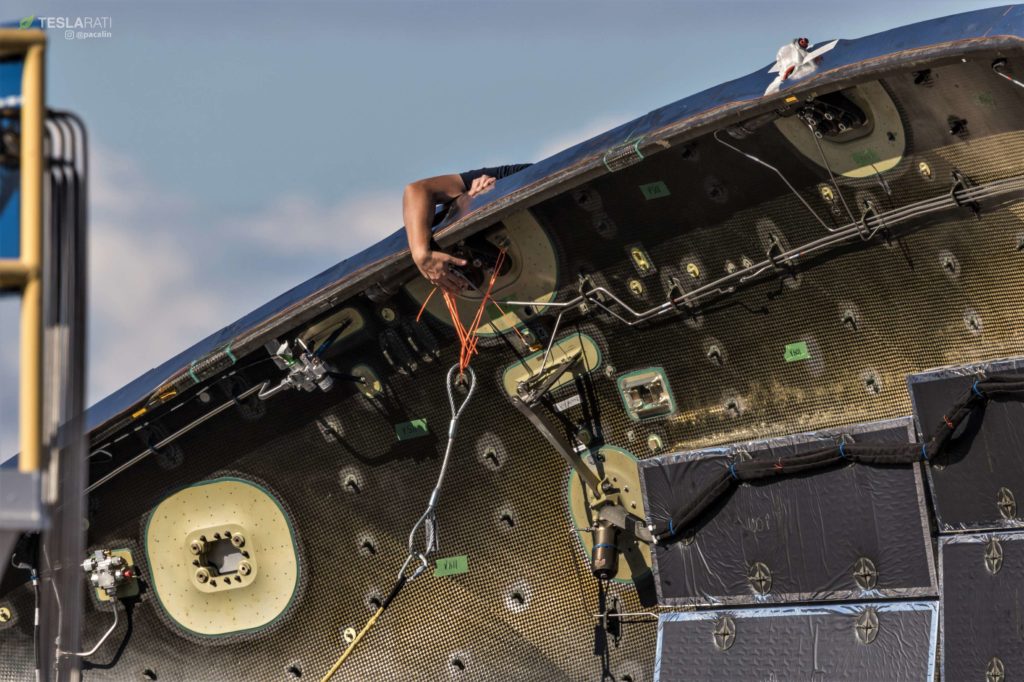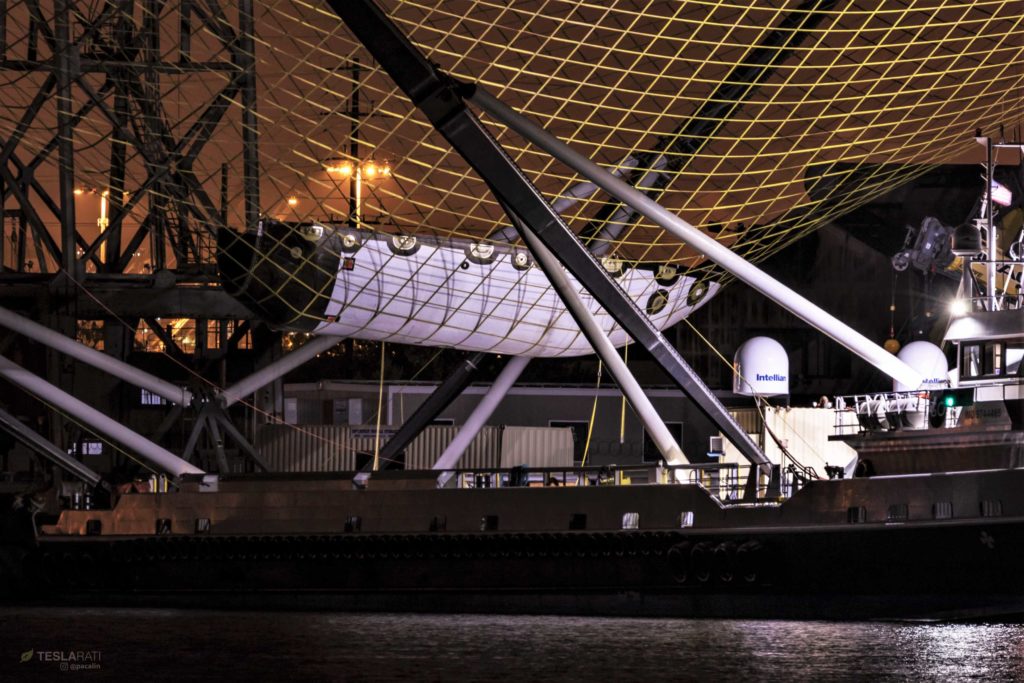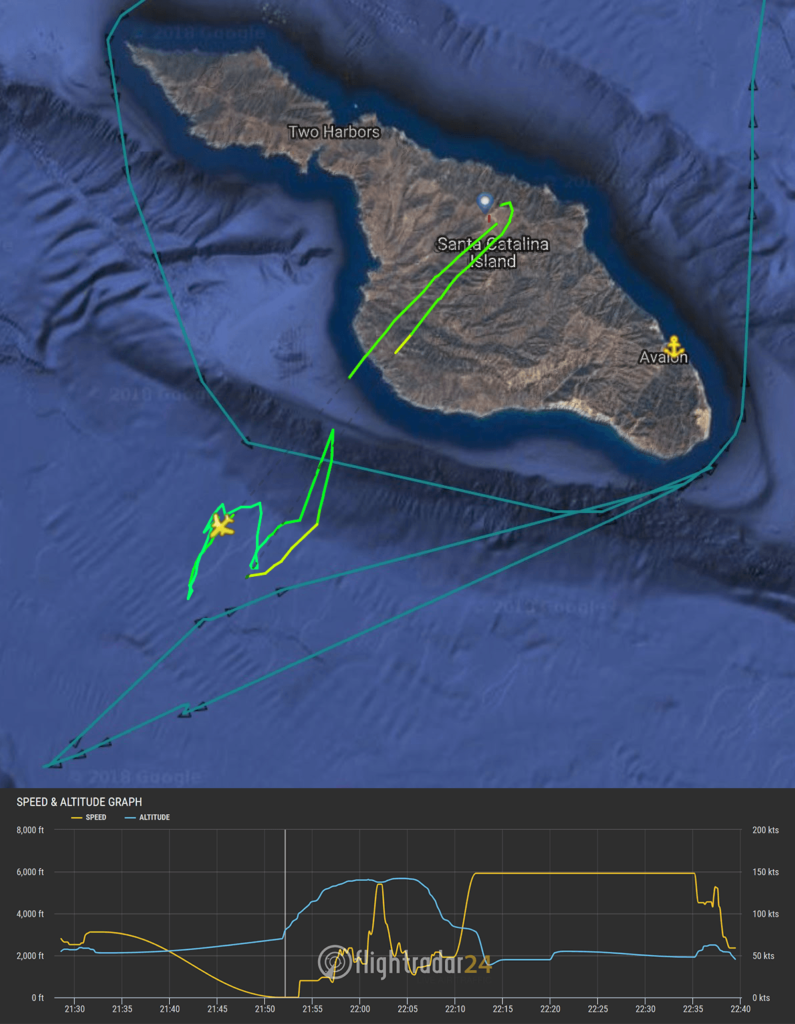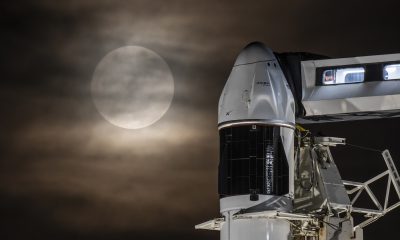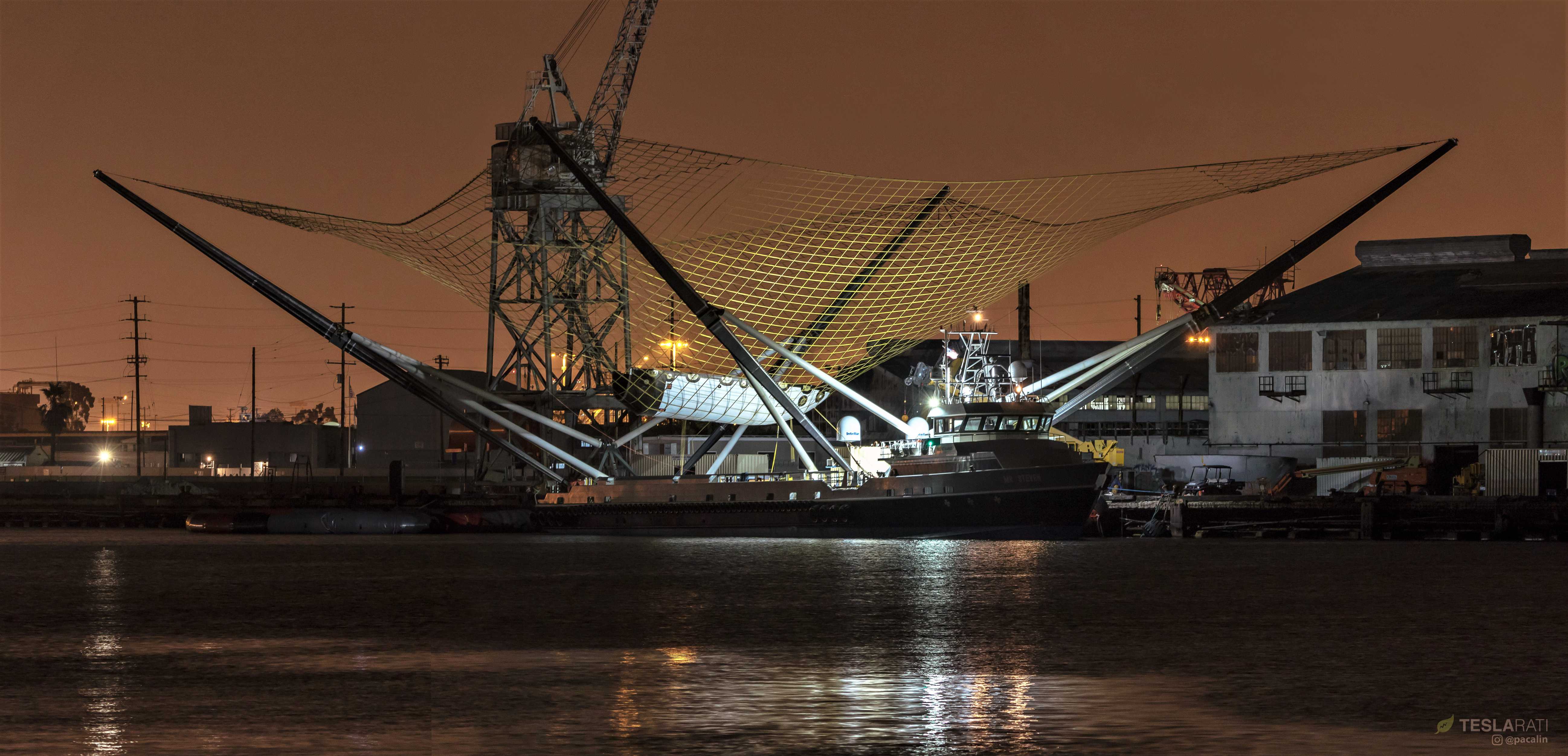

News
SpaceX’s Mr. Steven returns with Falcon fairing half in net after drop test practice
Captured in a series of photos taken by Teslarati photographers Pauline Acalin and Tom Cross over several days, SpaceX Falcon fairing recovery vessel Mr. Steven and recovery technicians and engineers have been preparing and practicing for a campaign of controlled fairing drop tests.
By using a helicopter to lift and drop a fairing into Mr. Steven’s net, SpaceX will be able to gather an unprecedented amount of data and control far more variables that might impact the success of recoveries. If the fairing is not destroyed in the process, this test series could be as long-lived as SpaceX’s Grasshopper program, used to work the largest up-front kinks out of Falcon 9 booster recovery.
Mr Steven looks ready. Should be leaving port at some point today ahead of SAOCOM-1A launch scheduled for Sunday, Oct 7, 7:21pm PT #mrsteven #SpaceX pic.twitter.com/Hk7HLmMDra
— Pauline Acalin (@w00ki33) October 6, 2018
Although SpaceX technicians managed to reassemble and install Mr. Steven’s net and arm fairing recovery mechanisms in just a handful of days, finishing less than 48 hours before the West Coast launch of SAOCOM 1A, the ship remained in port for the mission, passing up its fifth opportunity to attempt recovery of one of Falcon 9’s two fairings halves. Why exactly Mr. Steven never left port is unclear and unconfirmed, although SpaceX did mention that recovery would not be attempted this time around during its official launch webcast.
The most likely explanation is mundane – sea states with average swells as large as 4m (13ft) were forecasted (and later recorded) at and around the optimal fairing recovery zone. As a Fast Supply Vessel (FSV) explicitly designed to rapidly and reliably resupply oil rigs and other maritime work areas almost regardless of weather conditions, 4m waves would normally be a tiny pittance for ships as large and heavy as Mr. Steven and would be a nonsensical reason to halt deep-sea operations.
- Thanks to their relatively high angle of attack, Mr. Steven’s newest arms should not seriously impact his stability, but there is a chance that they limit his operational envelope in high sea-states. (Chuck Bennett)
- Mr. Steven seen listing roughly 5 degrees to port during arm installation, July 10th. (Pauline Acalin)
- A few-degree list seen during fairing recovery practice, August 13th. (Pauline Acalin)
On the other hand, Mr. Steven is without a doubt the most unusual FSV in existence thanks to his massive arms and net, stretching at least 60m by 60m. Based on photos of the arm installation process, significant lists of 5+ degrees are not uncommon when arms are unbalanced during normal staggered (one-at-a-time) installations, and SpaceX quite clearly installs the first two arms on opposite sides and orientations in order to minimize installation-related listing. This indicates that his newest arms have significant mass and thus leverage over the boat’s roll characteristics, perhaps explaining why Mr. Steven has performed anywhere from 5-10 high-speed trials at sea both with and without arms installed.
Most recently, however, Mr. Steven spent a solid six weeks armless at Berth 240 while some sort of maintenance, analysis, or upgrade was undertaken with those four arms and their eight shock-absorbing booms. It’s hard to know for sure, but there are no obvious visual changes between the arms installed in July and August and those now present on his deck, and the net also looks almost identical.
Fairing drop tests?
What’s less familiar these days is an oddly arranged Falcon 9 payload fairing half that has been floating around SpaceX’s Port of Los Angeles berths for the last two or so weeks. Up until October 4th, the purpose of that single half was almost entirely unclear. On October 4th, Teslarati’s entire space team (Tom, Pauline, and I) coincidentally arrived at the same time as 5-10 SpaceX technicians were working on the fairing, attaching a series of guylines and harnesses and inspecting a number of actuating mechanisms on the half.
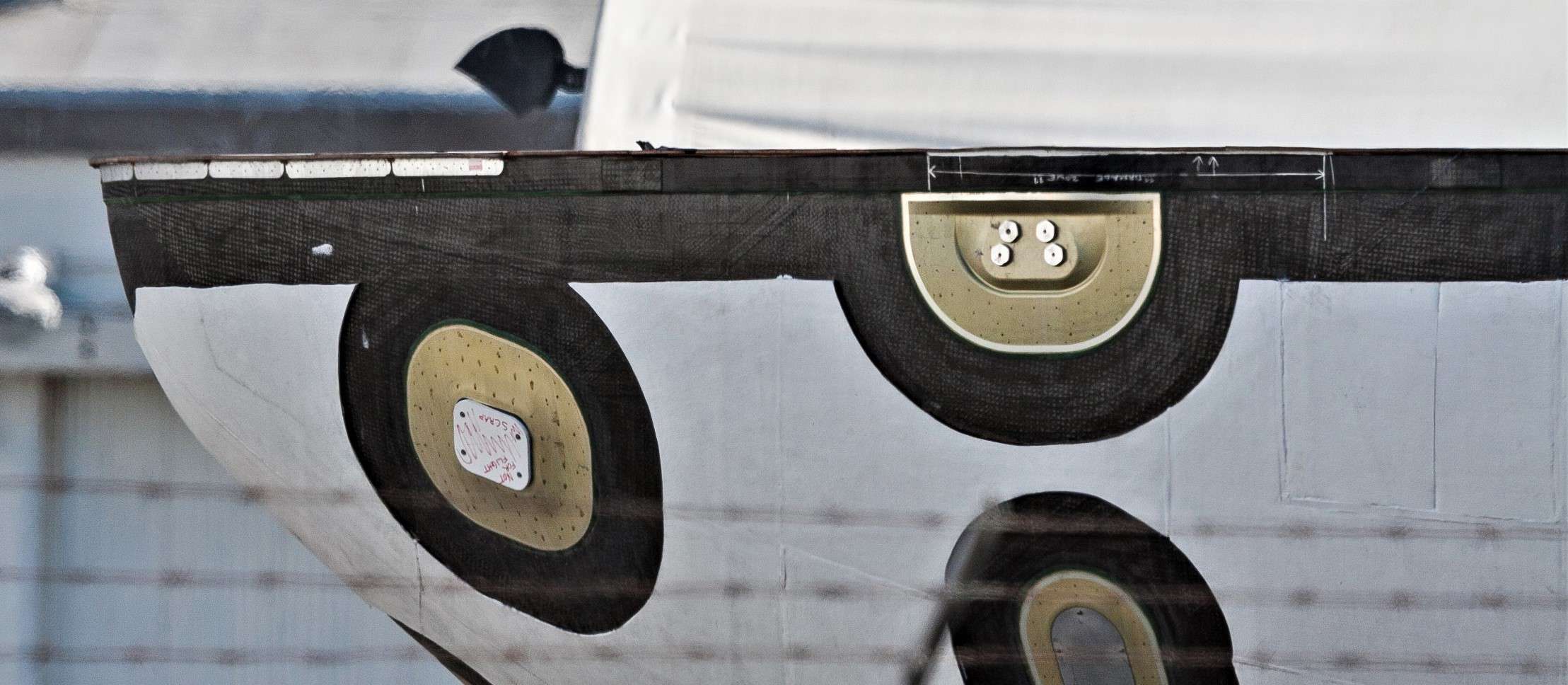
Just minutes after we arrived, a worker called out a short countdown and a wholly unexpected crashing noise sounded, followed immediately by several loud clangs as the harness connection mechanisms swung back and connected with metallic parts of the fairing. After the adrenaline wore off, the initial crashing noise was almost certainly the sound of the same mechanical jettison mechanism used to separate fairing halves ~3 minutes after the rocket lifts off.
Once photos of the event could be examined more carefully, that was exactly what we found – the six harness connections were attached to the fairing by way of the same mechanical interface that allows two halves to safely attach to each other. What we had witnessed was a harness separation test, using pressurized gas stored in COPVs (the gold striped cylinders) to rapidly actuate a latch, allowing the metal harness connectors to fall away. This is further evidenced by the presence of neon orange zip-ties connecting the ends of those harnesses to any sturdy fairing structure near the connection port, an easy and (presumably) affordable way to prevent those heavy connectors from swinging down and damaging sensitive piping and components.
- An overview of the weird fairing test article just before the harnesses were jettisoned. (Pauline Acalin)
- Note the taut, yellow ropes connected to the fairing at its original serparation connector ports. (Pauline Acalin)
- Zip-ties prevented the harness connectors from smashing (too hard) into the fairing’s innards. (Pauline Acalin)
- A Falcon 9 fairing during encapsulation, when a launch payload is sealed inside the fairing’s two halves. This small satellite is NASA’s TESS, launched in April 2018. (NASA)
According to someone familiar with these activities, the purpose of that testing is to prepare for true fairing drop tests from a helicopter. The jettisonable harness would be a necessity for easy drop testing, allowing the helicopter to carry a basic cargo hook and line while technicians inside communicate with the fairing to engage its built-in separation mechanism, all while ensuring that it immediately begins a stable glide or free-fall after dropping.
Observed on October 4th, it was at least moderately disappointing to see Mr. Steven remain in port during the spectacular Falcon 9 launch of SAOCOM 1A, October 7th. Reasons aside, roughly 12 hours after launch, Mr. Steven left on a 10+ hour cruise ~100 miles off the coast, where he repeatedly met up with tugboat Tommy and circled Santa Catalina Island once before heading back to port. Just 24 hours before launch (Oct. 6), the test fairing seen above was placed in Mr. Steven’s net for communications and harness testing – 24 hours after launch, Mr. Steven returned to Port of San Pedro after his 10-hour cruise with the same fairing half resting in his net.
- Mr. Steven returned to Port of San Pedro around 7pm on October 8th after a day spent at sea, apparently with a Falcon fairing half in tow. This is the second known time that a fairing has been in Mr. Steven’s net. (Pauline Acalin)
- An overlay of the paths of travel of a test-related helicopter and Mr. Steven, both on Oct. 8. The yellow plane is the heli at the beginning of a hover, while the gap between blue triangles in the lower left is where Mr. Steven was during that hover. (MarineTraffic + Flightradar24)
How and why it got there is unknown, as is the purpose of half a day spent boating around with the half in his net. However, a helicopter known to be involved in fairing drop tests was seen hovering and flying around Mr. Steven at the same time. Perhaps the two were practicing for real drop attempts, or perhaps the helicopter actually dropped a Falcon fairing (from > 2000 feet) and Mr. Steven successful caught it.
What is clear is that SpaceX is just getting started with efforts to perfect fairing recovery and eventually make the practice as (relatively) routine as Falcon 9 booster recovery and reuse is today. The latter was hardwon and the former will clearly be no easier.
For prompt updates, on-the-ground perspectives, and unique glimpses of SpaceX’s rocket recovery fleet check out our brand new LaunchPad and LandingZone newsletters!
Elon Musk
Elon Musk confirms Grok 4 launch on July 9 with livestream event
The rollout will be accompanied by a livestream at 8 p.m. Pacific Time.
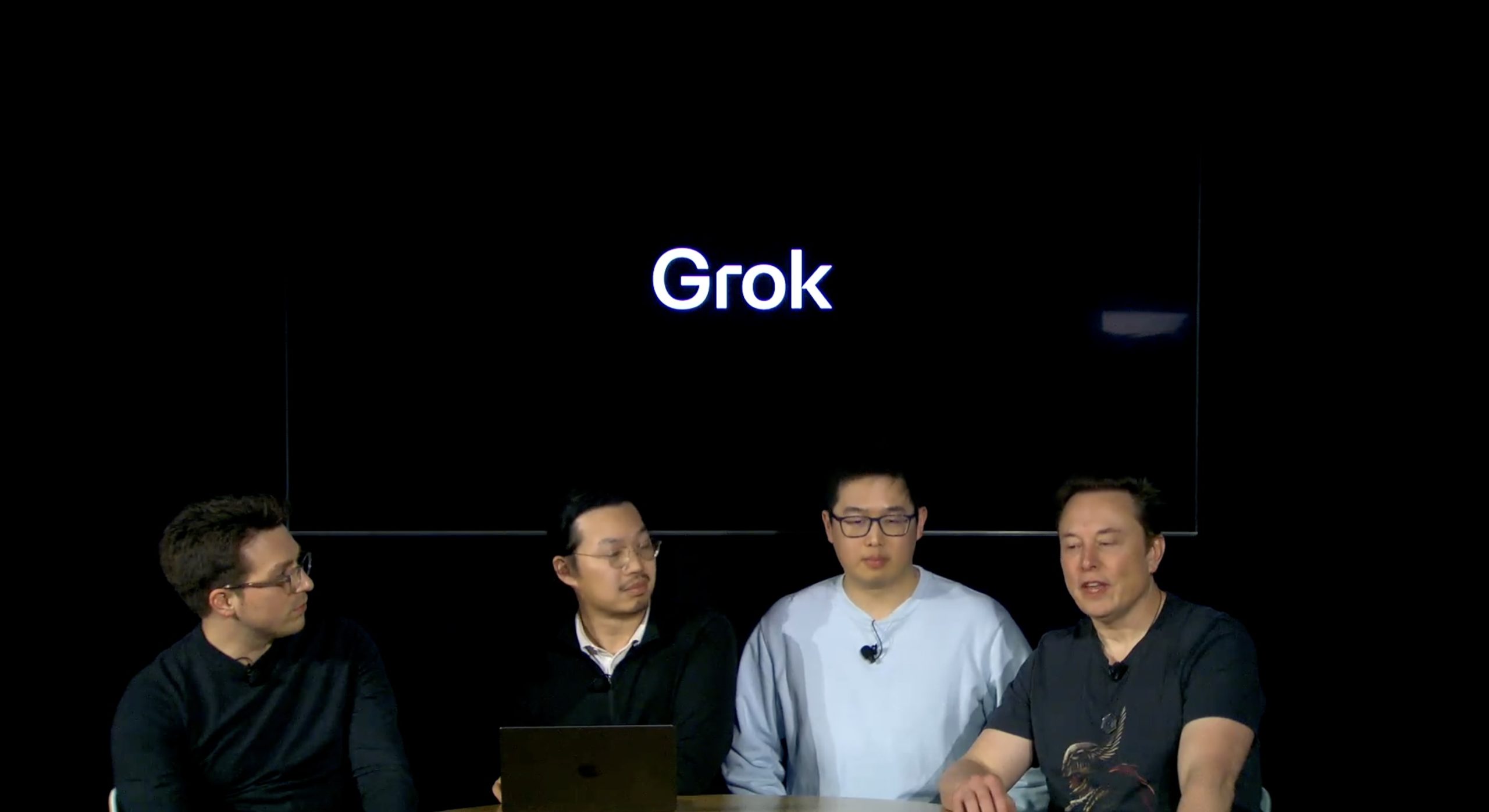
Elon Musk has officially confirmed that Grok 4, the latest version of xAI’s large language model, will launch on July 9. The rollout will be accompanied by a livestream at 8 p.m. Pacific Time, hosted on xAI’s official account on X.
xAI goes straight to Grok 4
Back in May, leaks indicated that xAI was getting ready to ship Grok 3.5. Considering Musk’s recent comments, however, it appears that the artificial intelligence startup would be focusing on the large language model’s fourth iteration instead. As noted in a Financial Express report, users on X have sighted references to Grok 4 in the lead up to the update’s launch, such as “grok-4-prod-mimic” and “Grok 4 Code.”
Musk’s Grok 4 announcement comes as AI competition intensifies between major players including OpenAI, Google, and xAI. With Musk’s Colossus supercomputer fully operational in Memphis, xAI appears to be accelerating its AI product roadmap.
Musk pushes Grok toward political neutrality
Grok 4’s launch also follows a recent controversy involving political bias, as noted in a CNN report. Last week, Grok responded to a user on X stating that political violence in the U.S. since 2016 had come more from the political right than the left. The chatbot noted in a later reply that its answer was based on information from sources like Reuters, the Journal of Democracy, and University of Maryland studies.
Musk stated that Grok’s response was a “major fail.” “Major fail, as this is objectively false. Grok is parroting legacy media. Working on it,” he wrote in a post on X. By the end of June, Musk noted that he was “grinding all night with the xAI team” and that they were making “good progress.” He also stated that the model “Will be called Grok 4. Release just after July 4th. Needs one more big run for a specialized coding model.”
News
Tesla opens massive solar Supercharger station in California
The Supercharger opened to customers ahead of Fourth of July weekend, while Tesla continues phase two of construction on the site.

Tesla has officially launched the first several Supercharging posts at a massive station in California, notably including solar canopies and grid-scale batteries to offer completely renewable charging.
Last week, Tesla announced on X that it opened the first 84 Supercharger stalls of a planned 168-stall station in Lost Hills, California. Additionally, the massive Supercharger project features 11MW of solar canopies and 10 Megapack batteries for off-grid charging powered entirely by solar energy.
Tesla completed the first phase of the project just days ahead of the busy Fourth of July holiday weekend, adding that initial construction took just eight months. In addition to the remaining charging stalls, Tesla says it’s building a set of lounge areas, renderings of which can be seen below alongside current photos of the site.
Notably, the site also includes V4 charging posts for the company’s latest available charging speeds, and it’s located near the busy junction between I-5 and Highway 46 in Kern County.
“Thank you [Kern County] and [PG&E] for collaboration and approvals,” Tesla wrote in a follow-up post.
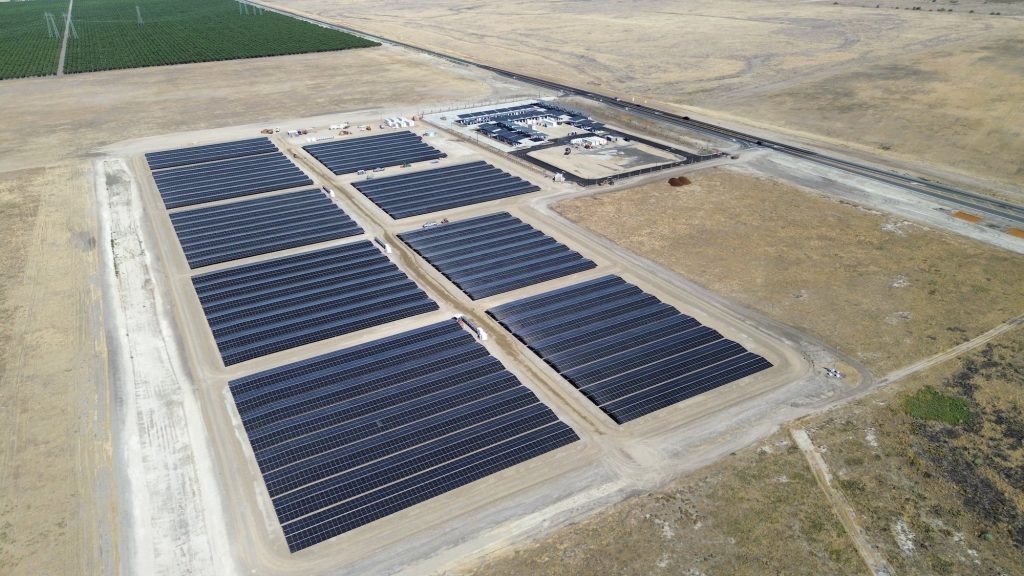
Credit: Tesla Charging | X
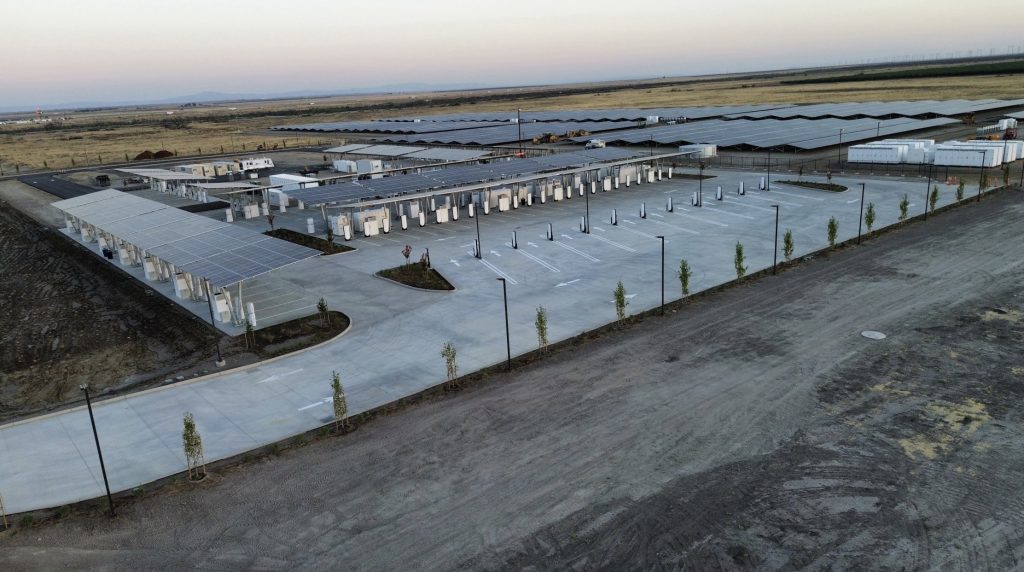
Credit: Tesla Charging | X
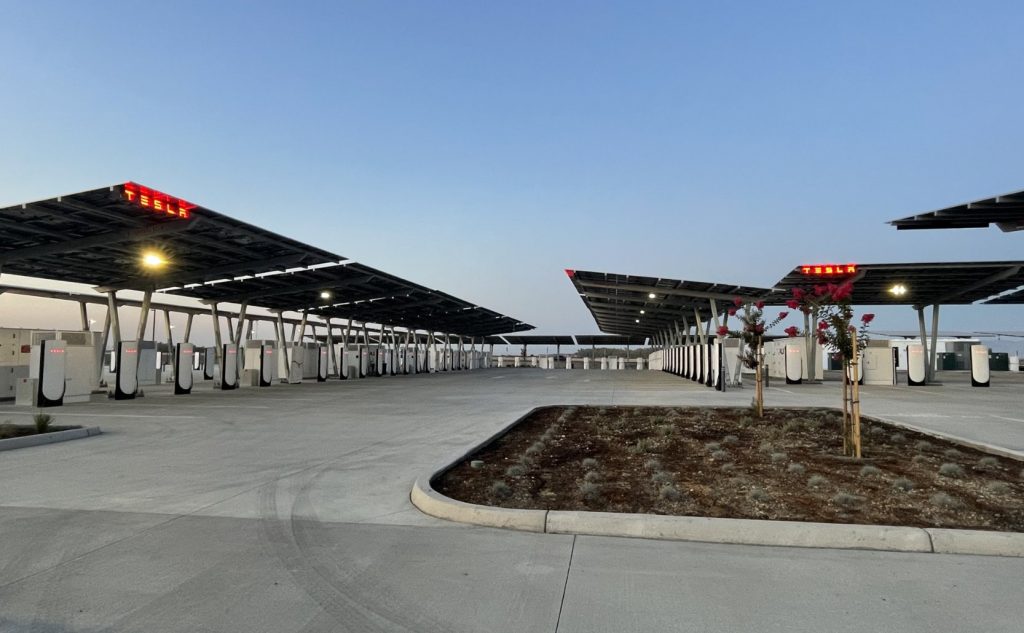
Credit: Tesla Charging | X
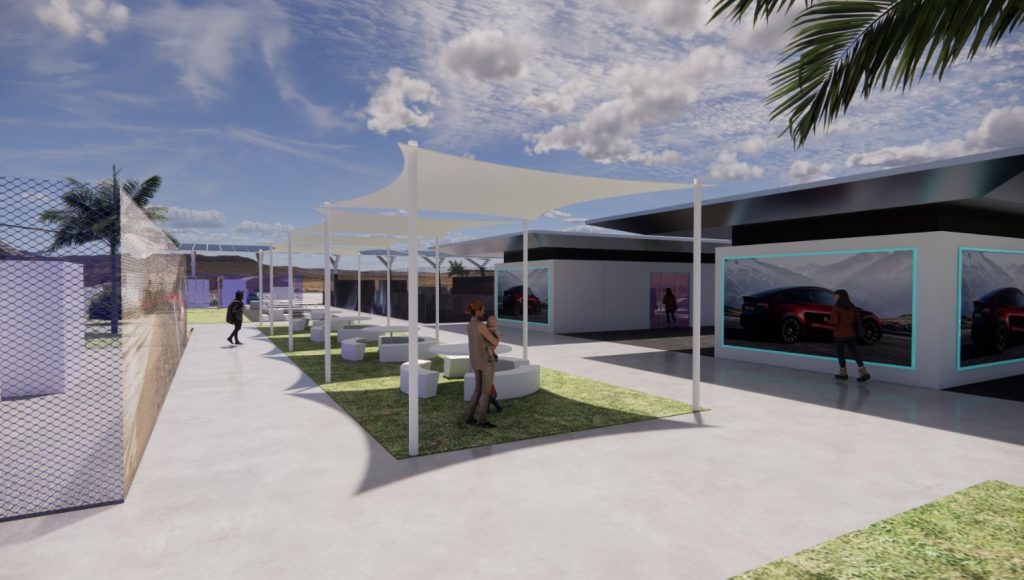
Credit: Tesla Charging | X
Tesla Supercharger Maps for North America, Europe, and Asia pic.twitter.com/0U5r0XRPyo
— TESLARATI (@Teslarati) July 2, 2025
READ MORE ON TESLA SUPERCHARGERS: Tesla launches ultra-fast V4 Superchargers in China for the first time
Testing at the LA Diner, plus Musk update on potential Tesla solar Gigafactory
The huge Tesla Supercharger station completed phase one of construction fairly quickly, especially given how long Tesla has been working on its unique Los Angeles diner, drive-in, and Supercharger location. Still, the company was seen performing some testing at the nearly-completed charging station earlier this month, and will reportedly be holding a job fair.
Elon Musk also responded on Monday morning to a post on X, suggesting that Tesla is “thinking about” building a U.S.-based solar Gigafactory in order to help support increased power needs with AI growth, and to bolster domestic solar production.
Tesla is building a new UFO-inspired Supercharger in the heart of Alien country
News
Tesla driver walks away from major accident with minor injuries
The driver sustained only minor injuries, and the exact cause of the crash remains under investigation.
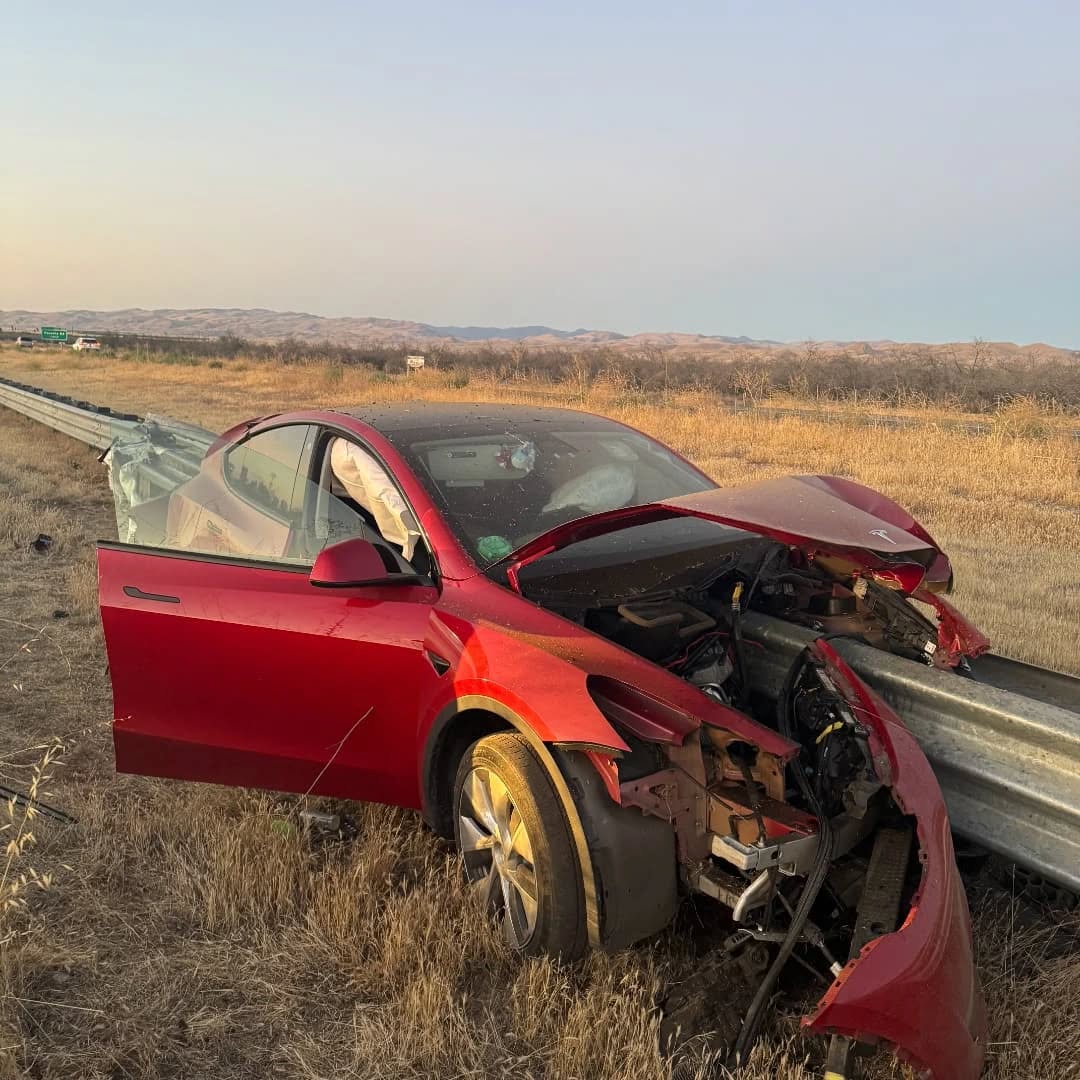
The driver of a Tesla Model Y survived and walked away from a harrowing accident on Monday in California, only sustaining minor injuries despite the vehicle being impaled by a guardrail.
On Monday morning around 4:34 a.m., the Los Banos division of the California Highway Patrol (CHP) responded to the accident on I-5 near Panoche Road, involving a 23-year-old in a Tesla Model Y. According to a post on social media, the driver veered off the road for unknown reasons in the northbound lane, before crashing directly into the guardrail and impaling the vehicle.
You can read the full message and photos from Los Banos CHP below, as were shared in a Facebook post on Monday afternoon.
This morning a Tesla model y was traveling in the #1 northbound lane of I-5 north of Panoche Rd. For unknown reasons driver allowed V-1 to veer off the roadway, travel through a dirt center divide, and crashed into the fixed metal guardrail. Lucky for the driver he only sustained minor injuries and was able to walk away. Driving a vehicle requires 100% attention to the road. Avoid distractions and focus on driving.

Credit: CHP Los Banos (via Facebook)
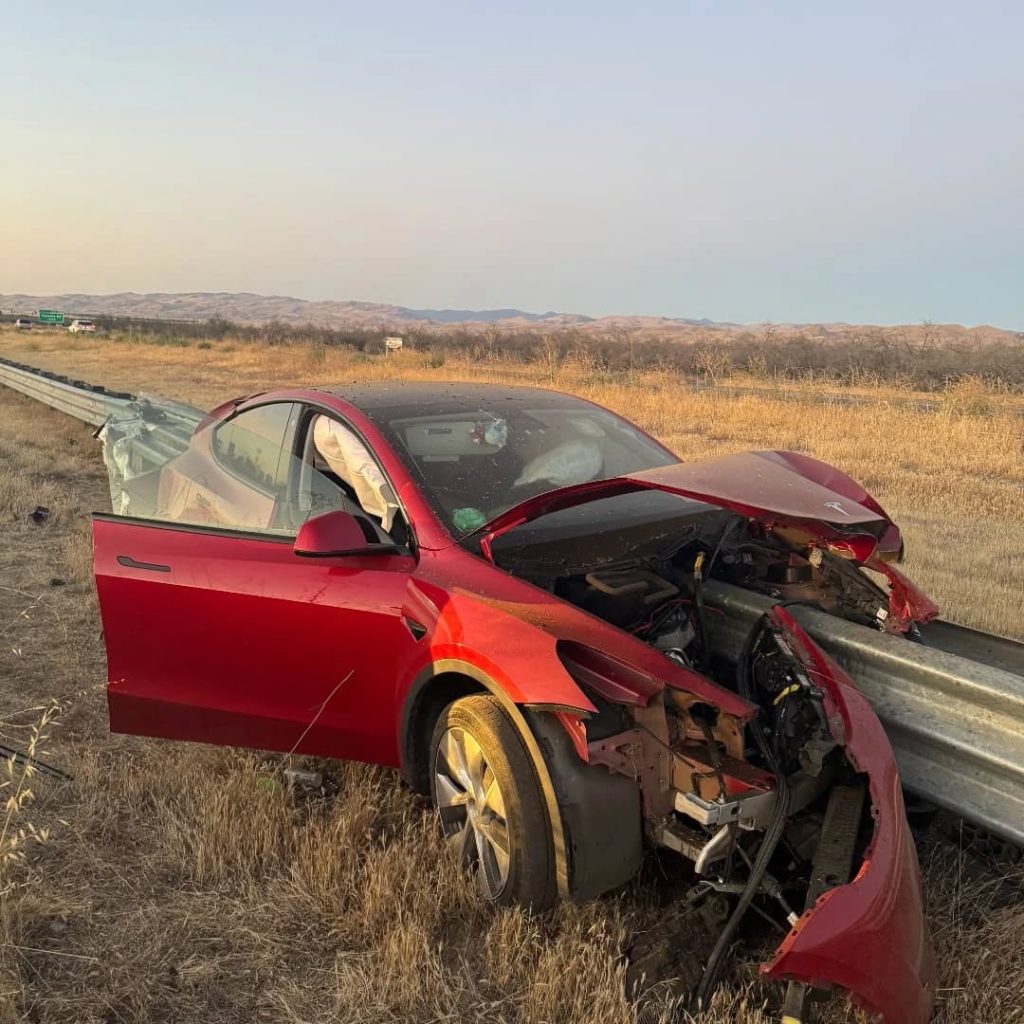
Credit: CHP Los Banos (via Facebook)

Credit: CHP Los Banos (via Facebook)
In a statement to SFGate, CHP officer Myles Anderson said that the driver only sustained minor injuries, while no arrests are made and drugs and alcohol are not suspected to have been involved. The report also notes that Tesla’s “cruise control and lane assistance features” were activated, according to Anderson. However, it’s not entirely clear if this is referring to Supervised Full Self-Driving (FSD), or to the cruise control and lane assist features baked into Autopilot.
At the time of writing, CHP has not yet responded to Teslarati’s request for clarification and additional details on the matter.
Tesla Crash Safety Ratings across its lineup: pic.twitter.com/ny30R7ceji
— TESLARATI (@Teslarati) July 1, 2025
READ MORE ON TESLA SAFETY: Tesla rolls out crucial new safety feature aimed at saving children
The news comes after Tesla has touted its vehicles as incredibly safe for many years. In December, for example, the company highlighted receiving top safety scores from regulators on four different continents throughout the world, including from the National Highway Traffic Safety Administration (NHTSA) and the Insurance Institute of Highway Safety (IIHS) in the U.S.
Tesla has also listed the goal of making its vehicles the safest on the road throughout the years, both in the overall design of its vehicles and in its Autopilot and Full Self-Driving (FSD) programs.
Tesla Model 3 ranks as the safest new car in Europe for 2025, per Euro NCAP tests
-

 Elon Musk1 week ago
Elon Musk1 week agoTesla investors will be shocked by Jim Cramer’s latest assessment
-

 News2 weeks ago
News2 weeks agoTesla Robotaxi’s biggest challenge seems to be this one thing
-

 News2 weeks ago
News2 weeks agoWatch the first true Tesla Robotaxi intervention by safety monitor
-

 Elon Musk1 week ago
Elon Musk1 week agoA Tesla just delivered itself to a customer autonomously, Elon Musk confirms
-

 News2 weeks ago
News2 weeks agoTesla Robotaxi rollout proves that Elon Musk still delivers, even if it’s late
-
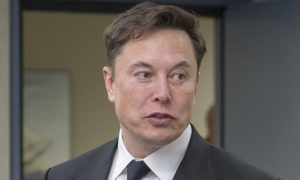
 Elon Musk2 weeks ago
Elon Musk2 weeks agoElon Musk commends Tesla team on successful Robotaxi launch
-

 Elon Musk2 weeks ago
Elon Musk2 weeks agoxAI welcomes Memphis pollution results, environmental groups push back
-

 Elon Musk2 weeks ago
Elon Musk2 weeks agoElon Musk confirms Tesla Optimus V3 already uses Grok voice AI

